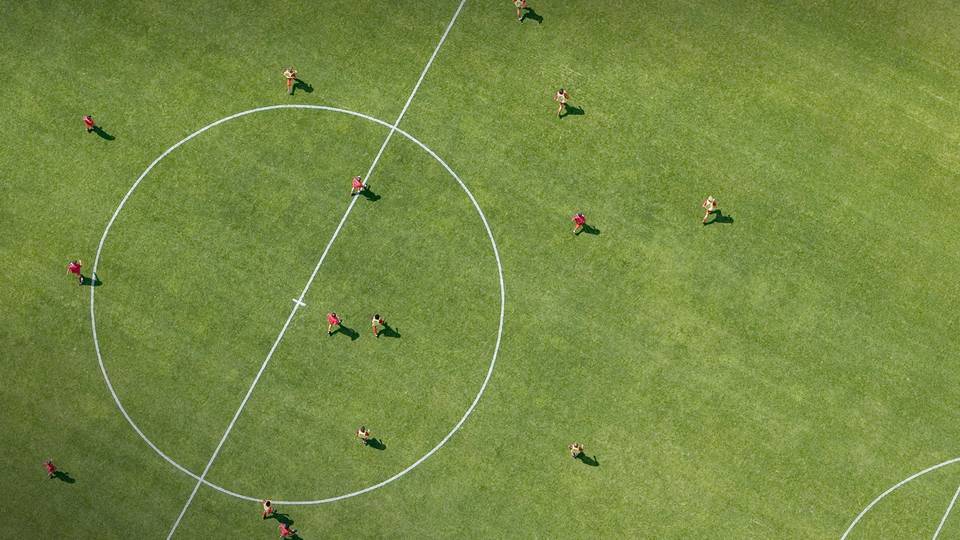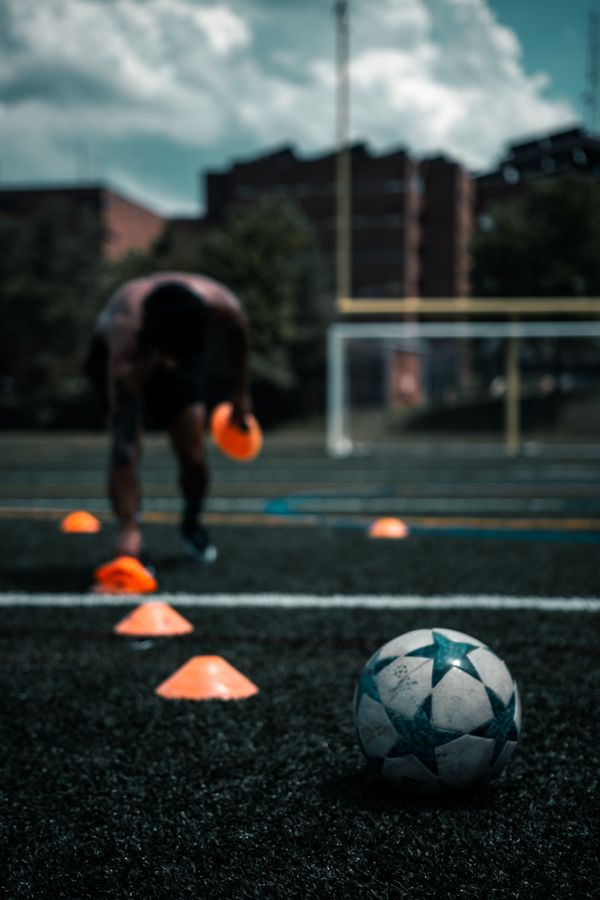Football coaching accessories are essential tools that help coaches effectively train their teams and manage practice sessions. From whistles and lanyards to stopwatches and clipboards, the right equipment can make a significant difference in coaching efficiency and player development. Investing in quality coaching supplies ensures smoother training sessions and better organisation on match days.
The modern football coach requires a variety of accessories to successfully manage their squad. Basic items like whistles and stopwatches help maintain timing and discipline during drills, while specialised equipment such as tactical boards and training markers facilitate strategic instruction. Many coaches find that having proper first aid kits and ball pumps on hand is equally important for addressing immediate needs during training.
As spring 2025 approaches, many grassroots football clubs in the UK are upgrading their coaching accessories to enhance their training programmes. Beyond the basic equipment, more coaches are looking into protective nets and other specialised gear to create comprehensive training environments. The right accessories not only improve coaching effectiveness but also demonstrate professionalism that players respond to positively.
Essential Football Coaching Gear
The right coaching equipment can dramatically improve training sessions, player safety, and overall team performance. From essential training tools to medical supplies and proper nutrition support, having the right gear ensures coaches can deliver effective sessions while keeping players safe and hydrated.
Training Equipment
A well-prepared football coach needs reliable training gear to run effective sessions. Whistles are perhaps the most fundamental item—opt for electronic or mechanical ones with lanyards for convenience and clear sound projection. Quality ball pumps with pressure gauges are essential for maintaining properly inflated footballs throughout training.
Speed ladders and cone sets are versatile tools for agility drills and marking training zones. These simple items enable countless drill variations to improve footwork, acceleration and spatial awareness. Many coaches supplement these with scrimmage vest pinnies in different colours to easily distinguish teams during practice matches.
Dry-erase coaching boards are invaluable for illustrating tactics and formations. Look for magnetic options with player markers that allow for quick adjustments during team talks. For more intensive training, consider investing in blocking shields and tackle dummies that allow players to practice contact skills safely.
First Aid and Safety
Every responsible coach must prioritise player welfare with comprehensive first aid provisions. A well-stocked medical kit should include ice packs, bandages, plasters, antiseptic wipes, and tape for treating minor injuries immediately.
Cold spray and heat pads help manage muscle strains and bruising common in football. Consider including a pocket mask for emergency resuscitation and disposable gloves to maintain hygiene when treating bleeding injuries.
An equipment repair kit containing spare studs, laces and basic tools ensures players aren't sidelined by easily fixable gear problems. Weather contingencies are also important—keep emergency blankets for cold conditions and sun cream for hot days.
Training in safe environments requires boundary markers and hazard cones to identify safe playing zones. Many coaches also carry a mobile phone in a waterproof case with emergency contacts pre-programmed, ready to summon help when needed.
Hydration and Nutrition
Proper hydration significantly impacts player performance and safety during training. Coaches should provide clean water bottles—ideally personalised to prevent cross-contamination—and ensure regular water breaks, especially in warm weather.
Portable water carriers or coolers with multiple spouts allow several players to hydrate simultaneously during short breaks. Consider sports drinks for longer sessions to replace electrolytes lost through sweating.
Nutrition planning is increasingly recognised as crucial in the soccer coaching world. Many coaches keep energy bars, fruit, and appropriate recovery snacks available for players, particularly for tournaments or consecutive training sessions.
Timing nutrition intake is important—encourage light, carbohydrate-rich snacks 60-90 minutes before training and protein-based options afterwards. Educational resources about proper match-day nutrition can help players develop good habits beyond training sessions.
Organizational Tools for Effective Coaching
Effective coaching requires more than just technical knowledge and motivational skills. The right organizational tools can transform training sessions and match preparation, helping coaches deliver clearer instructions and manage equipment efficiently.
Coaching Boards and Strategy
Dry-erase coaching boards are essential tools for any football coach. These portable tactical aids allow for quick visualization of formations, set pieces, and gameplay strategies. Most quality boards feature a full pitch outline with magnetic or movable pieces representing players.
During half-time talks or training sessions, coaches can illustrate positioning and movement patterns visually rather than relying solely on verbal instructions. This multi-sensory approach helps players—particularly visual learners—grasp concepts more quickly.
Many professional coaches use colour-coded systems on their boards, with different colours representing defensive and attacking players or specific tactical scenarios. Some advanced boards include clipboards or portfolio sections for storing session plans and match notes.
Consider investing in a board with a carrying case to protect it from weather conditions and for convenient transport between training grounds.
Managing Equipment
Efficient equipment management starts with proper storage solutions. Ball bags are fundamental organisational tools that can hold 10-15 footballs, allowing coaches to quickly transport them to and from training sessions.
High-quality ball bags typically feature reinforced handles, water-resistant materials, and shoulder straps for comfortable carrying. Some advanced designs include separate compartments for flat or damaged balls and additional pockets for small accessories like whistles or inflation needles.
Numbered bibs or scrimmage vests help coaches quickly organise teams during training sessions. Storing these in mesh bags allows them to dry properly between uses, preventing unpleasant odours and extending their lifespan.
Equipment checklists help ensure nothing is forgotten before matches or training. Many coaches use digital apps or laminated paper systems to track items and maintain inventory of coaching supplies, from cones and markers to first aid kits and hydration bottles.
Training Techniques and Drills
Effective football training requires a combination of specialized equipment and purposeful drills. The right accessories can significantly enhance player development while providing coaches with tools to target specific skills.
Developing Player Skills
Speed and agility are fundamental aspects of footballer development. Agility ladders offer versatile training options, with adjustable rungs that allow coaches to customise difficulty levels for players of all abilities. These ladders are particularly effective for improving footwork flexibility and coordination.
Cone drills remain essential for training quick directional changes. Arrange cones in various patterns to simulate match situations and develop players' ability to maintain ball control whilst changing direction rapidly.
For defensive training, tackle dummies help players practise proper positioning and body control. These are invaluable for teaching players how to apply pressure without committing fouls.
Free kick mannequins serve dual purposes. They help strikers practise accuracy and power whilst enabling defensive players to work on wall formations and blocking techniques.
Position-Specific Accessories
Goalkeepers benefit from specialised equipment including reaction balls and rebounders that create unpredictable trajectories, enhancing reflexes and handling skills. Padded diving mats also allow safe practice of diving saves on harder surfaces.
Outfield players require position-tailored accessories. Defenders can utilise tracking markers to practise positional awareness and coverage zones. These simple tools help coaches illustrate defensive shape during training sessions.
Midfielders benefit from passing arcs that encourage accurate ground passes. These curved markers train players to deliver balls with proper weight and trajectory, developing the vision essential for controlling the game's tempo.
Forwards should work with shooting targets that attach to goal corners, encouraging placement over power. Rebounding nets also provide solo training options, allowing strikers to practise first-touch control and finishing without requiring a training partner.
The best football (or soccer) coaches integrate these accessories into comprehensive training plans rather than using them as isolated drills.












